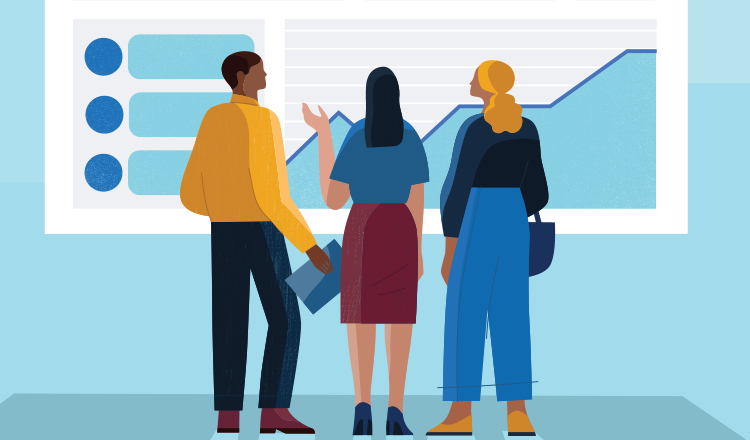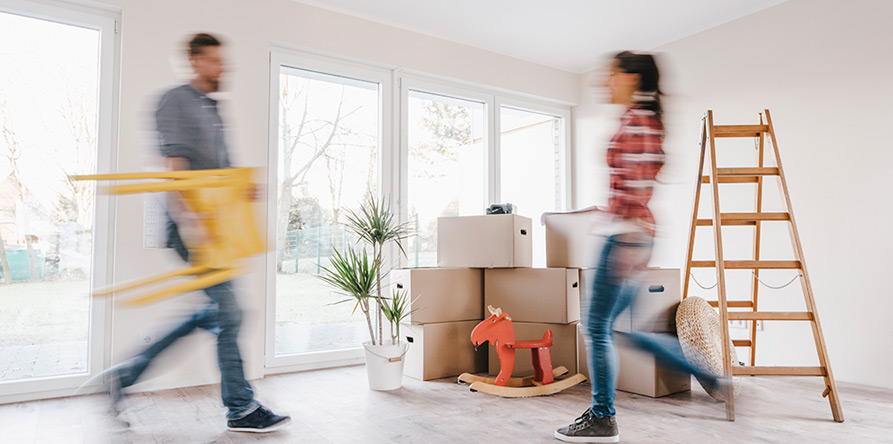- A Tax Free Savings Account (TFSA) is a flexible place to invest your savings because it offers tax-free growth and quick access to your money.
- Focusing on a TFSA delays the start of the FHSA’s 15-year clock, giving your savings extra years of tax-free growth.
- You can shift your TFSA dollars into an FHSA at a later date, claim the tax deduction and regain the TFSA contribution room the following January.

First-time home buyers: Why a TFSA could still be a smart down payment tool
It wasn’t long ago that a TFSA was regarded as one of the most effective ways to save for the purchase of your first home. The introduction of the First Home Savings Account (FHSA) – and the recently beefed-up RRSP Home Buyers’ Plan (HBP) – may have stolen some of that thunder, but the TFSA remains an important piece of the puzzle for aspiring homeowners.
According to Jacqueline Power, Director of Tax and Retirement Research at Fidelity Investments, the secret to finding the most tax-efficient way to build up a down payment is about understanding how a TFSA’s flexibility can complement these other financial tools. “It all depends on the individual and what’s important to them,” she says. “All three can be beneficial.”

Why the TFSA helps when your timeline is uncertain
Are you planning to buy your first home in 15 years? Before answering “yes,” try reframing the question. If you’re 18 now, do you think you’ll be ready to own a home by the time you turn 33? That 15-year time frame is important, because that’s how much time you have between opening an FHSA and putting the funds toward the purchase of a qualifying home or transferring them into an RRSP. If you don’t know the answer, building up your down payment in a TFSA can give you a little breathing room to determine the best time to open an FHSA.
Once you open an FHSA, you have the option of funding it using your TFSA. This allows you to get a tax deduction for your contributions. Plus, as an added bonus, you’ll be able to reclaim that TFSA contribution room at the start of the next calendar year. “When you’re 18 and don’t have a lot of earned income, you might not need the tax deduction yet,” Power explains. “In that situation, it might make more sense to put your money into a TFSA, have it grow there and then move it to an FHSA or even an RRSP, depending on what works best for you.”
How a TFSA gives you tax-free access to your down payment savings
When it comes to saving for a down payment, TFSAs have one key advantage over FHSAs and RRSPs: flexibility. Unlike withdrawing from an FHSA or an RRSP, there are no strings attached to TFSA withdrawals, meaning, you can use the money for whatever you like. With an FHSA, you have 15-year window to make a qualifying home purchase, while you are obligated to repay withdrawals from the Home Buyers’ Plan over the next 15 years.
A TFSA can be a great way to save, especially if you’re not sure what your future home plans are, clarifies Power. “The earlier you start to put money away, the better – whether it’s for a home or anything else – because you’re taking advantage of compound growth,” she says.
What is the FHSA? Tax benefits and rules for first-time homebuyers
If you know your timeline for buying a home, an FHSA could be a better saving option versus a TFSA. The account, which has been available to Canadians since 2023, combines the most desirable aspects of a TFSA and an RRSP. Contributions to an FHSA are tax deductible, meaning, they lower your taxable income in the year they are made (or in a future year, if you carry the deduction forward), and withdrawals are tax-free (provided they go toward a qualifying home purchase).
Lifetime contributions are capped at $40,000, but your account could be worth much more than that when you factor in compound growth, interest and dividends. “An FHSA makes so much sense in many situations, because it’s the best of both worlds,” Power explains. “That’s where you would likely want to focus first.”
Even if you don’t buy a house within the 15-year window, you can still transfer those funds tax-free into an RRSP before closing the account. “If you buy a home down the road, you could still use the Home Buyers’ Plan to withdraw $60,000,” Power says. “It’s not as good as using funds from an FHSA and an RRSP, but at least you still have that opportunity.”
Understanding the RRSP Home Buyers’ plan
In addition to the benefits of the TFSA, the RRSP Home Buyers’ Plan is another powerful complement to the FHSA, especially now that each buyer can withdraw up to $60,000 tax-free from the account. Both accounts reward you with an up-front deduction when you contribute, but their withdrawal rules are different: HBP funds are treated as a 15-year, interest-free loan that must be paid back to your RRSP, while FHSA money leaves the plan for good, with no repayment required.
TFSA, FHSA or RRSP: Which account should you use first?
For pure tax efficiency, the FHSA has the edge, but combining it with savings from your TFSA and HBP can significantly increase your down payment. “If you’re shopping in a smaller city, where homes cost around $300,000, you might manage with a $40,000 down payment,” Power says. “In Toronto or Vancouver, you’ll likely need to draw from your FHSA, TFSA and RRSP to get there.”
Try to be strategic about where your money goes, no matter which account you decide to fund first. One option worth considering is an All-in-One ETF: It automatically spreads your contribution across a diversified blend of global stocks and bonds, rebalances the mix as markets move and gives you broad market exposure without the hassle of monitoring multiple funds yourself.


